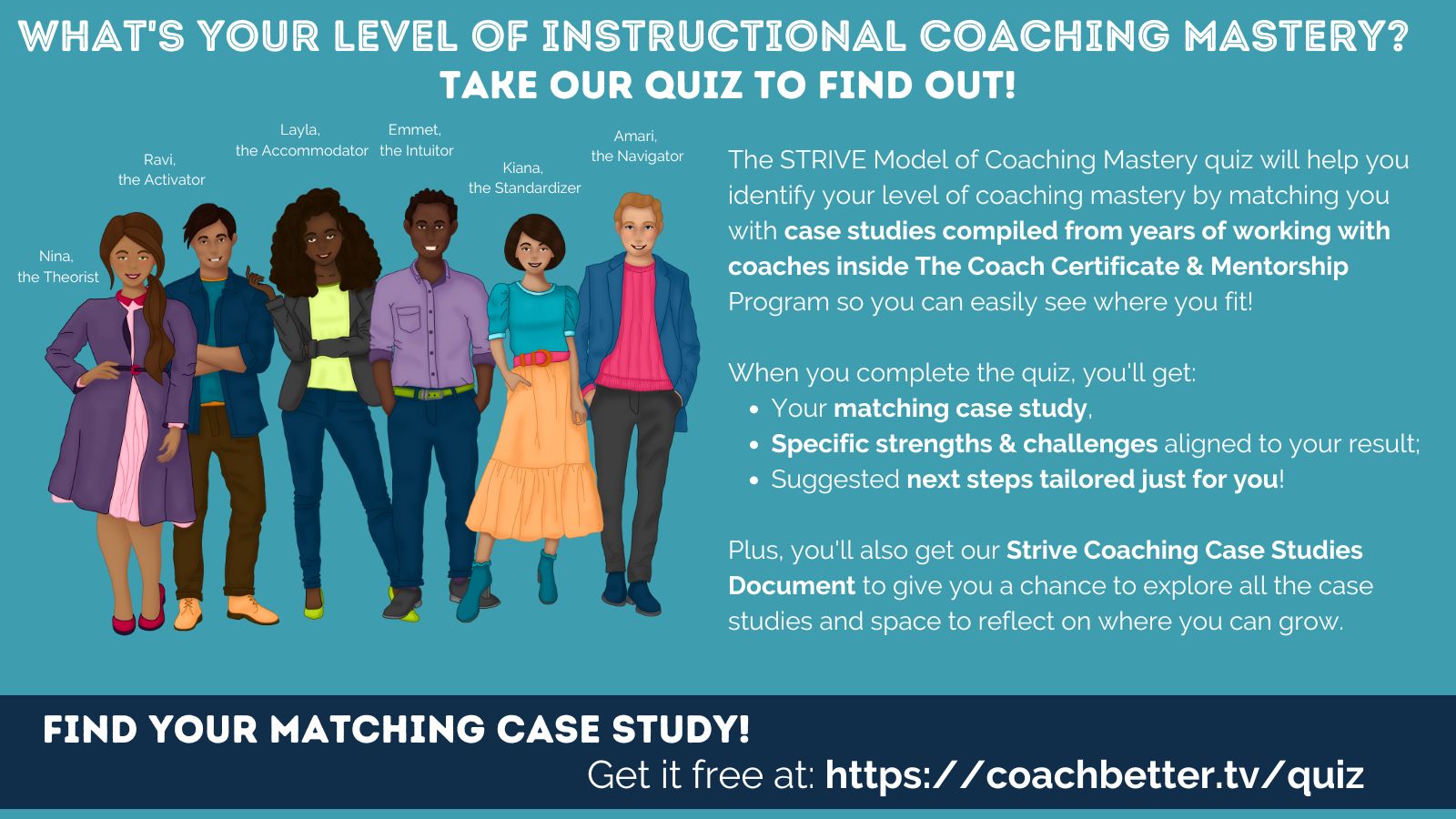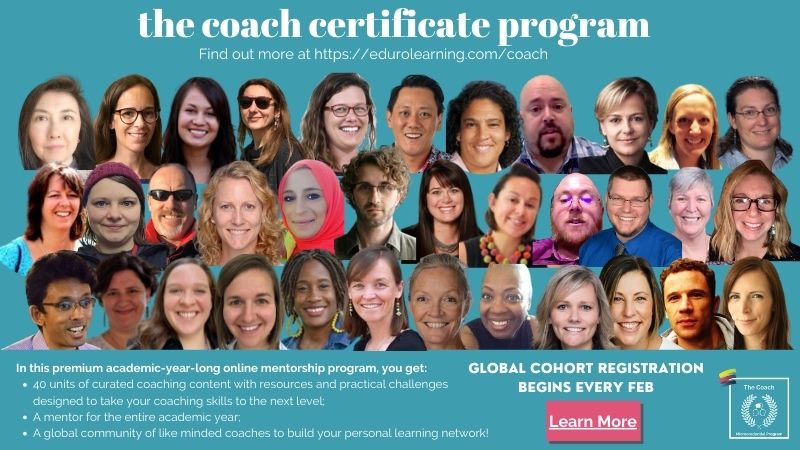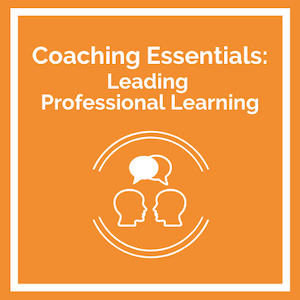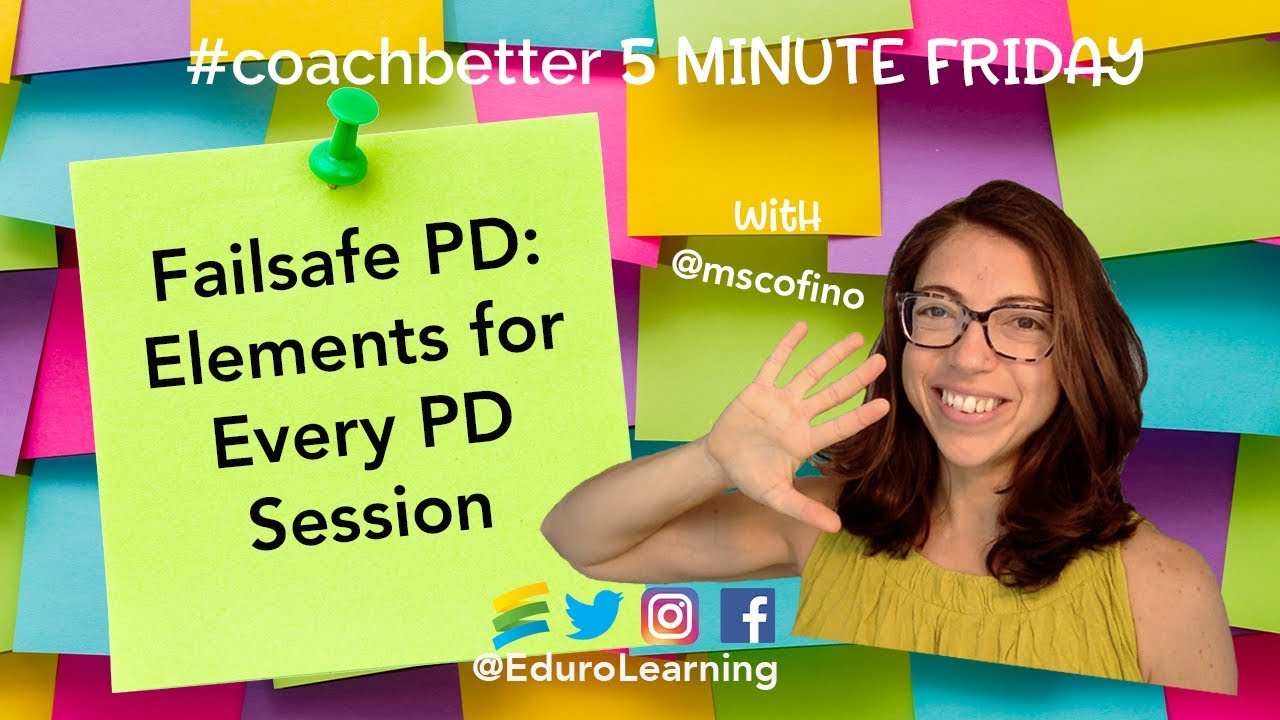Teachers know what good learning looks like, and as coaches, we’re often asked to run Professional Learning for our peers.
So, when we get the opportunity to offer PD as coaches, we need to model what we want to see in classrooms.
If it’s the first time you’ve presented in front of your peers, or the first time you’ve ever presented, this can be super stressful.
I’ve been presenting for decades and I still get stressed Every. Single. Time.
But, over the years, I’ve developed a few strategies that work consistently.
In this post, I’m sharing seven of those strategies to help you make every PD session you run successful.
Please note: these seven tips are not necessarily in the order that you might want to use them in a session and you don’t necessarily need to use them all. They’re just seven strategies that we try to use all the time when we’re offering professional development through Eduro Learning, but also as individual instructional coaches in the schools that we work in.
1: Have a Warm-Up
Some kind of transition activity at the very beginning of your session helps set the tone for your session – and shift participant mindset to the learning that will happen now. Oftentimes as instructional coaches in schools, we’re offering PD at the end of a very busy school day. So even two or three minutes to just give teachers a few moments to settle in and focus on the topic of your session.
Giving teachers time make that transition from whatever they were doing during the school day, to what’s happening now, can be really helpful, even if it’s the beginning of a professional development day, where they’re just coming in from home. That transition time can change the energy in the room in just a few minutes! You might want to play music as teachers are walking in, and then facilitate a very short activity which help teachers relax and get into the mindset for learning. This can be even more important when teachers have been teaching online all day too!
Please note: not everyone likes to stand up and move around the room, not everyone likes to talk to the people at their table, so developing a toolkit that provides a variety of ways to engage in a transition activity is super valuable.
2: Share Relevant Resources with Structure
I’m a HUGE fan of protocols, structures or frameworks for conversation. We all know the teacher that sucks the air out of the room once they start talking, or never stops talking, or won’t engage in conversation. Protocols or frameworks for conversation help ensure that there is equity in “air time.” They certainly don’t have to be complicated, but they make a BIG impact.
Some of my favorites come from:
You can use protocols like these to facilitate discussion, and I love using them when I share a resource like a video, an article or a piece of student work. Sharing the resource with a protocol or format for what you want teachers to do creates an equitable learning environment where everyone has a chance to think, share and reflect.
The key is to avoid giving teachers a video or an article or a piece of student work and asking them to just “talk about it”. Giving a framework or a protocol or a structure helps people understand what they’re supposed to do in during the time they’re reviewing that resource.
What’s YOUR level of coaching mastery?
All coaches go through various stages of coaching mastery. Once you identify where you’re at, you can begin to build the skills needed to move to the next stage.
This quiz is based on real-life case studies compiled from years of working with coaches inside The Coach Certificate & Mentorship Program!
When you receive your results, you’ll also get your matching case study from the STRIVE Case Studies to see where you fit in the stages of coaching mastery.
Ready to tackle your challenges and move on to the next level in YOUR coaching practice?

The STRIVE Model of Coaching Mastery quiz will help you identify your level of coaching mastery by matching you with case studies compiled from years of working with coaches inside The Coach Certificate & Mentorship Program so you can easily see where you fit!
When you complete the quiz, you’ll get:
- Your matching case study,
- Specific strengths & challenges aligned to your result;
- Suggested next steps for each stage;
Plus the Case Study Document includes:
- Case studies leveled by coaching mastery;
- A framework to identify essential stages of professional growth & key areas to focus on in your professional learning;
- Alignment with the THRIVE Model for a Successful Coaching Culture;
- Space for you to reflect & prioritize so you can take action immediately!
You’ll go straight to the Quiz, and get the Case Study Document via email.
3: Make it Practical
Give teachers something to actually do, ideally a hands-on experience, and a practical takeaway for the next day of teaching. For example if your PD session is on a Wednesday afternoon, is there something they can do in their classrooms on Thursday? Or is there something they can do in that session with you that is active and hands-on so that you’re modeling what you’re talking about? We all know the phrase “walk the talk” but somehow this often gets forgotten in teacher PD. Be the model of what good PD looks like, by encouraging your participants to engage in a learning experience, just like you would in the classroom.
Post COVID update: The same applies to virtual sessions. After the last 2 years of sitting through “chalk and talk” lectures delivered online, I think we’ve all had enough of “one-size-fits-all” PD. How would you help students explore this concept in your classroom? Do the same with your adult learners, differentiated for their ability level and experience.
For example, if you’re asking teachers to differentiate in their classrooms, try to differentiate that activity so that teachers are seeing – in practice exactly – what you’re them to do (use grouping or breakout rooms effectively, provide differentiated resources, have small group conversations) – exactly what you would do in the classroom.
4: Include Movement
If you have a longer session, especially a day long session, or multiple day sessions, we probably don’t want our participants to be sitting the entire time. Even if we offer breaks (which we absolutely should), we know the teachers and everyone really are creatures of habit. We will come back to that same table, that same seat, every single session, unless we’re asked, or there is some structure for us to move around.
So even if we’re just getting people up and talking at one point during a 45 minute sessions, so they talk to someone different than the person they sat next to that helps kind of push them a little bit outside of their comfort zone and not get too stagnant in the particular seat they might have chosen.
Please keep in mind that not everyone is an extrovert, and not everyone likes to talk about their learning with others. Movement can include quiet reflection or processing time, or even different spaces to conduct practical work too. Try to strike a balance between keeping the energy up but not moving people so much that it’s a burden and becomes annoying.
Level Up Your Coaching with The Coach!
If you are ready to develop your coaching practice over the next academic year, and explore topics like transitioning your work from individuals to teams, please join us for our next cohort of The Coach!
Wherever you are in building a coaching culture in your school, The Coach will give you the strategies, skills and tools you need to make coaching a success and will empower you to confidently apply instructional coaching strategies in any situation – from building a coaching program, to having coaching conversations, to being a leader in your school community. We facilitate only one cohort each academic year so we can offer individualized support for each participant.
Registration for our next global cohort opens once a year – check the website for details!

Find out more at: https://edurolearning.com/coach/
5: Have an Agenda
I know personally as a type, a type person, it drives me crazy to go to a meeting where I don’t know what’s going to be happening. Unfortunately, a lot of times in schools, this is exactly what happens. So you can be a great role model for just basic organizational skills, by having an agenda in advance with all the resources that teachers might want to look at after your session linked right in there so they can find them easily.
Share your agenda in advance with the resources that you’re going to use in that session linked on the agenda. This can also be a great place to provide extension resources or items that teachers might use after the session. This is a very small action that very clearly demonstrates your professionalism and the care that you take in facilitating this learning.
6: Value the Expertise in the Room
It’s really important to remember that even if you are the instructional coach and you’re that passionate advocate for your content area, that everyone in the room has something to offer. Adults come to our learning experiences with plenty of their own work and life expertise too. Potentially there are people in that room with you that know more than you about a certain area or subject.
Give teachers that opportunity to share with each other and share their expertise and make it clear that you know there’s lots going on in that room, because there is. Sometimes this is a nice way to warm up to a topic or reflect and cool down, or you might want to use the expertise for a process I like to call SpeedGeeking.
7: Close the Session with Intentionality
The same way that you had a warmup at the beginning, offer a closing session with things like:
- key takeaways or
- action plans, or
- something teachers write down on a post-it note and hand to you, or
- write down on a post-it note and keep for themselves, or
- a goal that they thought of during the session.
Ideally providing time to help them take whatever was offered during that professional development session and make it actionable for them so that they can do something with it in the future.
Hopefully one of those strategies is helpful for you that you can bring to the next professional development session that you offer.
Watch the Video
Ready to start Leading Professional Learning with Confidence?
Take our mini-course: Leading Professional Learning! It’s self-paced, so you can start right now!
The course is short and actionable, designed for busy teachers and coaches so you can finish in 1-3 hours. If any of the ideas in this post sparked your interest, the mini-course provides in depth detail on all of the strategies shared above and more!

This short course gets 5 stars from Andre DeKoker, MS Innovation and Maker Coach, Concordia International School Shanghai:
Basic presentation design strategies delivered in an engaging way. Kim models her talk perfectly and one walks way with a sense of something that is doable, albeit with a little practice. Her images left a huge impression even after the video had ended. This session is good for beginners and also for those who are more adept at running professional learning sessions as it offers good reminders for all. Big take away: Plan By Design-Actively Engage your Learners in the Process.
– Andre DeKoker

Recent Comments